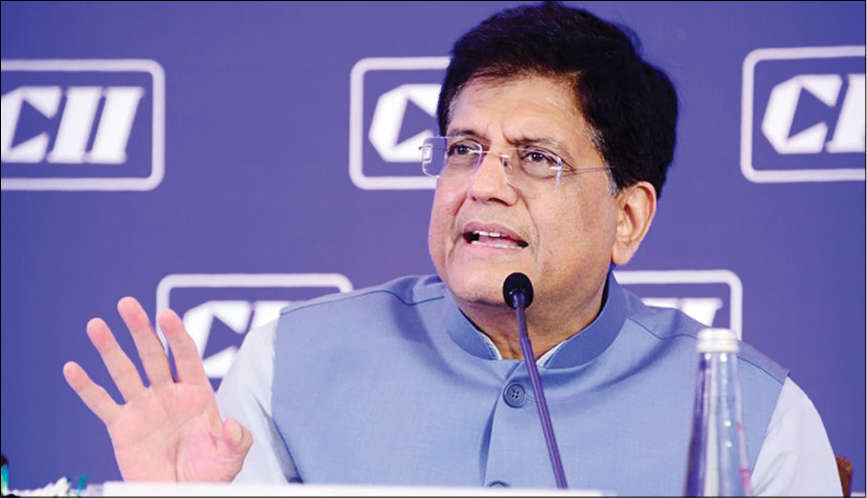Asia has become a notable force within the fashion business. It is rightly said that if the proportion of Asian customers increases by one unit, the proportion of Asian models also increases in the subsequent year. Asian models from round the world have reached top runways making an impact in this business known for its need for greater diversity and representation. The 2022 grand finale held in Pune recently.
The internationally acclaimed Face of India (FoI) fest, in association with the AMF, held its grand finale in Pune and crowned six winners from over 6,000 entries received from various parts of the country. The property opens gates to endless opportunities for aspiring models and plays the role of a mentor in their fashion journey.
The extensive judging panel included FoI chairman Badal Saboo, Sonigara Corp co-director Rajiv Sonigara and acclaimed Indian actors that included Sahil Shroff, Elakshi Gupta, Nikki Tamboli, Ayeesha Aiman and Kabir Singh.
The whole world of fashion, glamour and culture was present as contestants all across India spiritedly walked the ramp to be the next Face of India 2022 with acclaimed designers such as Amin Farista (Collection Gandhian Fab), Niti Singhal (Collection Twee in One), Bhavini Parikh (Collection Bunko Junko), Ivodia London, Sumit Das Gupta, Ashok Maanay (Collection Suroor) and Siddhant Agrawal. The showcased collection was a story beautifully woven through sustainable fashion in different styles.
Alisha Chandrakar from Bhilai, Chhattisgarh, Vedant Mahewar from Nanded, Maharashtra, Ravi Naval from Mumbai, Niharika Joshi from Gujarat, Kriti Karmakar from Gauripur, Assam, and Rohit Rana from Chalisgaon, Maharashtra, were crowned as Face of India winners and qualified for the semi finale round of Face of Asia, 2022.
After an extensive round of voting across Asia through online and social platforms, Kriti Karmakar and Ravi Naval were declared winners to represent India and compete with the winners from other 26 Asian countries for the most coveted ‘Face of Asia’ title which has a prize money of $1 lakh.
“India is a country with high potential for global development, and FoI has been a cultural exchange platform for India and South Korea. Let’s hope for good results when the Indian winners come to Korea. I am positive AMF will serve as an opportunity for fashion and beauty industry exchange between the two countries,” Yang Eui-Sik, Chairman, AMF, said.
“This year, AMF will be held at Uijeongbu in Gyeonggi province, north of Seoul, South Korea, which was also dubbed as a ‘military town’, as it hosted the US military for seven decades. The ultimate goal of organizing such an event is to transform Uijeongbu into a fashion and beauty mecca in Asia,” said Uijeongbu Mayor Kim Dong-geun.
Mayor Dong-geun also plans to hold Uijeongbu’s flagship festivals like the ‘Hoeryong Cultural Festival’ and ‘Haengbokro Festival’ at the time of the upcoming AMF. He also announced that this year, the winners of the upcoming Face of Asia competition will become Uijeongbu’s promotional ambassadors.
Talking about the pageant Saboo, who is also the managing director of Pune Fashion Week, shares, “It is unquestionably an immense joy to see top Indian models at this global stage. This pageant has surely brought the best of opportunities for aspiring models from all over the country. AMF is a great concept and an initiative that opens trade opportunities between 27 Asian countries including India.”
“I have been associated with South Korea and, particularly AMF for a long time now, and it makes me proud to see how welcoming and open both countries are with the economic and socio-development of the people of their country and, are taking bold steps towards investing into various sectors.”
“I am happy to have successfully opened gates for the Fashion industry in both South Korea and India and am hopeful to do so with the other sectors as well. India is at its peak of development and it is the right time for the Korean companies to roll their eyes towards India especially in the R&D and technology sector.”
“I hope I am able to play the crucial role of being a fair representative for both the countries as both the countries have set a target to increase bilateral trade to USD 50 billion by 2030. It’s the right time and the perfect opportunity,” added Saboo.
Sonigara Corp also teamed up with Face of India and launched ‘Codename Vogue’, a new ultra-fashionable residential project near Aundh, on a 9+ acre land parcel. This property will add a fashionable sentiment to the city and claims to create a New Aundh in Pune.
Talking about the launch, Rajiv Sonigara, co-director of Sonigara Corp, said, “Sonigara Corp’s new property ‘Codename Vogue’ is truly a unique project aimed at setting the highest levels when it comes to luxury and fashionable property offerings in Pune. We are enabling the community to make their style statement through their new address.”
“This will create the next benchmark in fashionable living with cutting edge design and a trendiest lifestyle. The glamour associated with the iconic Face of India is only matched by Sonigara’s standards for delivering unique homes and lifestyle experiences,” added Sachin Sonigara.
To promote the recognition of blogging as a profession, Bloggers Alliance Education Society (BAES) along with Pune Fashion Week chose to proudly announce the launch of the Pune Bloggers Alliance at the Face of India event and appointed Saboo as the President of the BAES Maharashtra Chapter.
The event also recognized various achievers of India who have contributed tremendously in their fields with the Face of India Achievers Awards 2022.
The following were the awardees: Dr Amit Nagpal (President, BAES, India), Devendra Jaiswal (Co-Founder Story Mirror), Vikram Kotnis (Founder and Managing Director, Beyond Walls), Aman Mehra (Director, Tribe Co-living), Abhishek Mishra (CEO of Dada Saheb Phalke International Film Festival (DPIFF), Jimmy Mistry (Founder Della Leaders Club), Amita Deshpande (Founder, Recharkha, The EcoSocial Tribe), Raqesh Bapat and Isha Bapat (Earth Canvas & Co), Ganesh Bakale (Director, Maha Ngo foundation), Dimple Vaghela and Laveena Keswani (Previous FOI Winners) and Lalit Dhanwe, a young force of figurative art from Karaha Studio who performed a live on-spot sculptor at the event.

 Opinion2 years ago
Opinion2 years ago
 Fashion7 years ago
Fashion7 years ago
 Entertainment7 years ago
Entertainment7 years ago
 Opinion2 years ago
Opinion2 years ago
 Business News2 years ago
Business News2 years ago
 Policy&Politics2 years ago
Policy&Politics2 years ago
 Business News2 years ago
Business News2 years ago
 Entertainment2 years ago
Entertainment2 years ago










